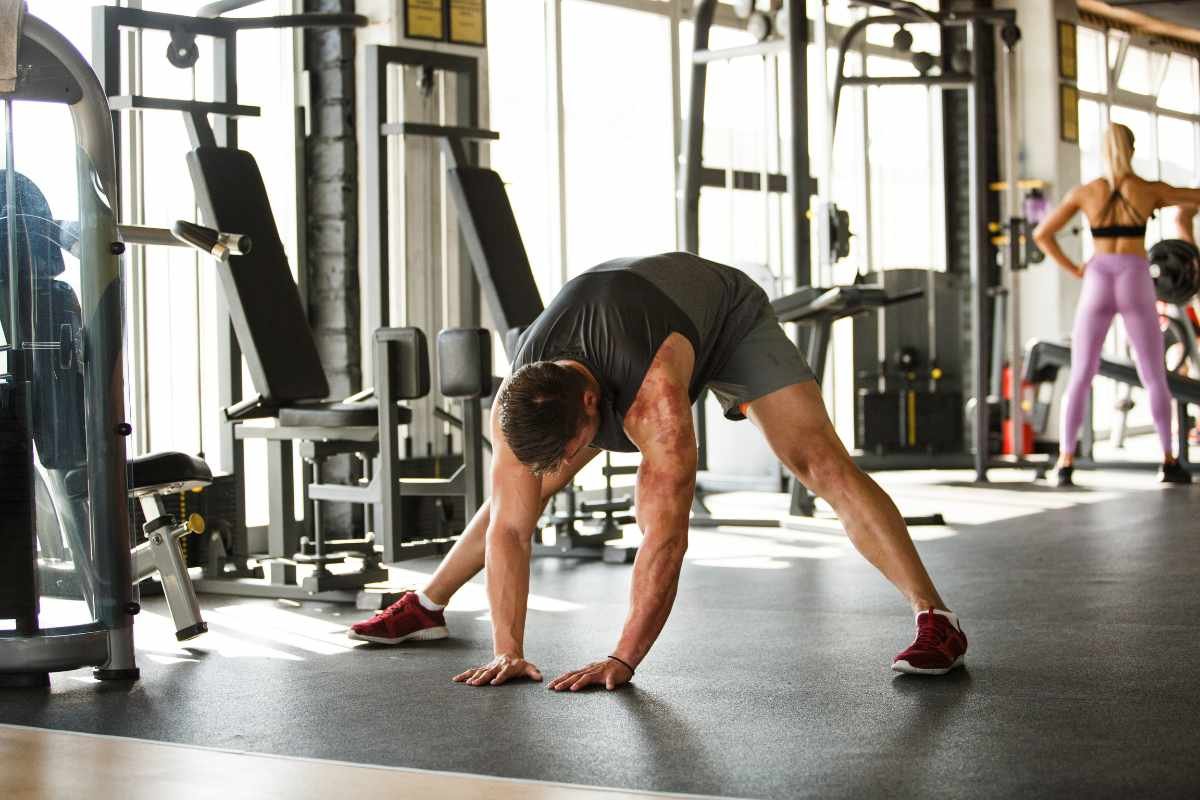Imagine this: you’re out for a jog, your favorite playlist pumping through your earbuds, and then, out of nowhere, you feel a sharp pain at the back of your thigh. You immediately know something’s wrong—it’s a hamstring strain. If you’ve ever experienced this, you’re not alone. Hamstring strains are one of the most common injuries, especially among athletes. But here’s the good news: with the right Hamstring Strain Rehabilitation plan, you can recover and get back to doing what you love, stronger than before.
In this comprehensive guide, we’ll walk you through everything you need to know about hamstring strain rehabilitation. From understanding the nature of the injury to outlining a detailed exercise plan, we’ve got you covered. By the end of this article, you’ll have a clear roadmap to recovery, ensuring that your rehabilitation process is as effective and efficient as possible. Let’s dive in.
Understanding Hamstring Strains
Before we dive into Hamstring Strain Rehabilitation exercises, it’s crucial to understand what a hamstring strain is and why it happens. The hamstring is a group of three muscles located at the back of your thigh: the biceps femoris, semitendinosus, and semimembranosus. These muscles play a key role in walking, running, and bending your knee. A strain occurs when one or more of these muscles are overstretched or torn.
Common Causes:
- Overstretching: This typically happens when you suddenly kick out your leg or overstretch during physical activity.
- Weak muscles: Weak or imbalanced hamstring muscles are more prone to injury.
- Poor flexibility: Limited flexibility increases the risk of straining your hamstring.
- Fatigue: Tired muscles are more likely to sustain an injury, as they lose the ability to properly support the joints.
The Importance of Proper Rehabilitation

Proper Hamstring Strain Rehabilitation is critical for a full recovery. Without it, you risk recurrent injuries, prolonged pain, and even permanent damage. Rehabilitation not only helps in healing the muscle but also strengthens it, improves flexibility, and enhances your overall performance.
Key Benefits of Rehabilitation:
- Reduced risk of re-injury: Strengthening exercises target the hamstrings and surrounding muscles, lowering the chance of future strains.
- Improved flexibility: Stretching exercises help in restoring the normal range of motion.
- Faster recovery: A structured rehabilitation program speeds up the healing process by promoting blood flow to the injured area.
Immediate Steps After a Hamstring Strain
When a hamstring strain occurs, the first 48 hours are crucial. During this period, your primary goal is to minimize swelling and pain. Here’s what you should do:
- Rest: Avoid any activity that may aggravate the injury.
- Ice: Apply ice packs to the affected area for 15-20 minutes every 2-3 hours.
- Compression: Use an elastic bandage to compress the injury, reducing swelling.
- Elevation: Elevate your leg above heart level to help decrease swelling.
Once the initial pain and swelling have subsided, you can begin a Hamstring Strain Rehabilitation program. Let’s explore the steps involved.
Phase 1: Early Rehabilitation (First 1-2 Weeks)
The first phase of Hamstring Strain Rehabilitation focuses on reducing pain and swelling, regaining basic mobility, and beginning gentle exercises to avoid muscle atrophy.
1. Gentle Range of Motion Exercises:
- Heel Slides: While lying on your back, slowly slide your heel towards your buttocks and then back down. This helps maintain knee mobility without straining the hamstring.
- Static Hamstring Contractions: While sitting, tighten your hamstring muscles without moving your knee. Hold for 5 seconds, then relax. Repeat 10 times.
2. Low-Intensity Stretching:
- Hamstring Stretch: Sit on the floor with one leg extended and the other bent. Lean forward towards the extended leg, keeping your back straight. Hold for 20-30 seconds. This stretch should be gentle and pain-free.
3. Ice and Elevation:
- Continue to ice the injured area after exercises to manage inflammation.
During this phase, it’s essential to avoid any activities that might exacerbate the injury. Listen to your body and progress slowly.
Phase 2: Intermediate Rehabilitation (Weeks 2-4)
In this phase, Hamstring Strain Rehabilitation focuses on gradually increasing strength and flexibility while reintroducing low-impact activities.
1. Strengthening Exercises:

- Bridge Exercise: Lie on your back with your knees bent and feet flat on the floor. Lift your hips towards the ceiling, engaging your glutes and hamstrings. Hold for 5 seconds before lowering. Perform 2 sets of 10 repetitions.
- Single-Leg Deadlift: Stand on one leg, keeping the knee slightly bent. Slowly bend at the hip, extending the opposite leg behind you, and then return to the starting position. This exercise targets the hamstrings and improves balance.
2. Advanced Stretching:
- Standing Hamstring Stretch: Place your heel on a low platform, keep your leg straight, and gently lean forward until you feel a stretch in the back of your thigh. Hold for 30 seconds.
3. Low-Impact Cardiovascular Exercises:
- Swimming or Cycling: These activities allow you to maintain cardiovascular fitness without putting too much strain on the hamstrings. Begin with short sessions and gradually increase the duration.
By the end of this phase, you should notice significant improvements in strength and flexibility. However, it’s crucial not to rush the process—your body needs time to fully recover.
Phase 3: Advanced Rehabilitation (Weeks 4-6)
The advanced phase of Hamstring Strain Rehabilitation aims to fully restore strength, flexibility, and endurance. It also focuses on reintroducing sports-specific activities.
1. Dynamic Strengthening Exercises:
- Nordic Hamstring Curls: Kneel on a soft surface with your ankles secured. Slowly lower your body forward, controlling the movement with your hamstrings. This is a challenging exercise but highly effective in preventing future injuries.
- Lunges: Step forward into a lunge position, ensuring your front knee does not extend beyond your toes. Engage your hamstrings as you push back to the starting position. Perform 2 sets of 10 repetitions on each leg.
2. Plyometric Exercises:
- Jump Squats: Start with your feet shoulder-width apart. Lower into a squat and then explosively jump upwards. Land softly and immediately lower into the next squat. This exercise helps improve power and agility.
3. Sports-Specific Drills:
- Sprinting Drills: Gradually reintroduce sprinting by starting with light jogs, then progress to higher speeds. Focus on maintaining good form to avoid re-injury.
- Agility Drills: Incorporate lateral movements, cone drills, and cutting exercises to prepare your body for the demands of your sport.
This phase is crucial for ensuring you are ready to return to your previous level of activity. Always consult with a healthcare professional before progressing to high-intensity exercises.
Preventing Future Hamstring Strains
After completing your Hamstring Strain Rehabilitation program, prevention should be your next focus. Here are some tips to reduce the risk of future injuries:
1. Regular Strengthening Exercises: Incorporate hamstring-strengthening exercises into your routine, such as deadlifts and leg curls.
2. Warm-Up and Cool-Down: Always warm up before engaging in physical activity and cool down afterward with stretching.
3. Balance Training: Work on improving your balance and coordination with exercises like single-leg stands or balance board drills.
4. Listen to Your Body: Pay attention to signs of fatigue or discomfort during workouts and take rest days as needed.
When to Seek Professional Help
While most hamstring strains can be managed with a structured Hamstring Strain Rehabilitation program, some cases may require professional intervention. Seek medical advice if:

- The pain is severe or worsening: If your pain persists or worsens despite rest and rehabilitation, it may indicate a more serious injury.
- You experience recurring strains: Recurrent hamstring strains suggest an underlying issue that needs to be addressed by a specialist.
- You’re unsure about your recovery: If you’re uncertain about your progress or the exercises, consulting a physical therapist can provide you with a tailored recovery plan.
Conclusion
Hamstring Strain Rehabilitation is a journey that requires patience, consistency, and commitment. By following a structured rehabilitation program, you can effectively recover from a hamstring strain and reduce the risk of future injuries. Remember, every individual’s recovery timeline may vary, so it’s important to listen to your body and adjust your rehabilitation plan accordingly. With the right approach, you’ll be back on your feet, stronger and more resilient than ever before.
Now that you have all the tools and knowledge for successful hamstring strain rehabilitation, it’s time to take the first step toward your recovery. Stay dedicated, and you’ll be back to your favorite activities in no time.








